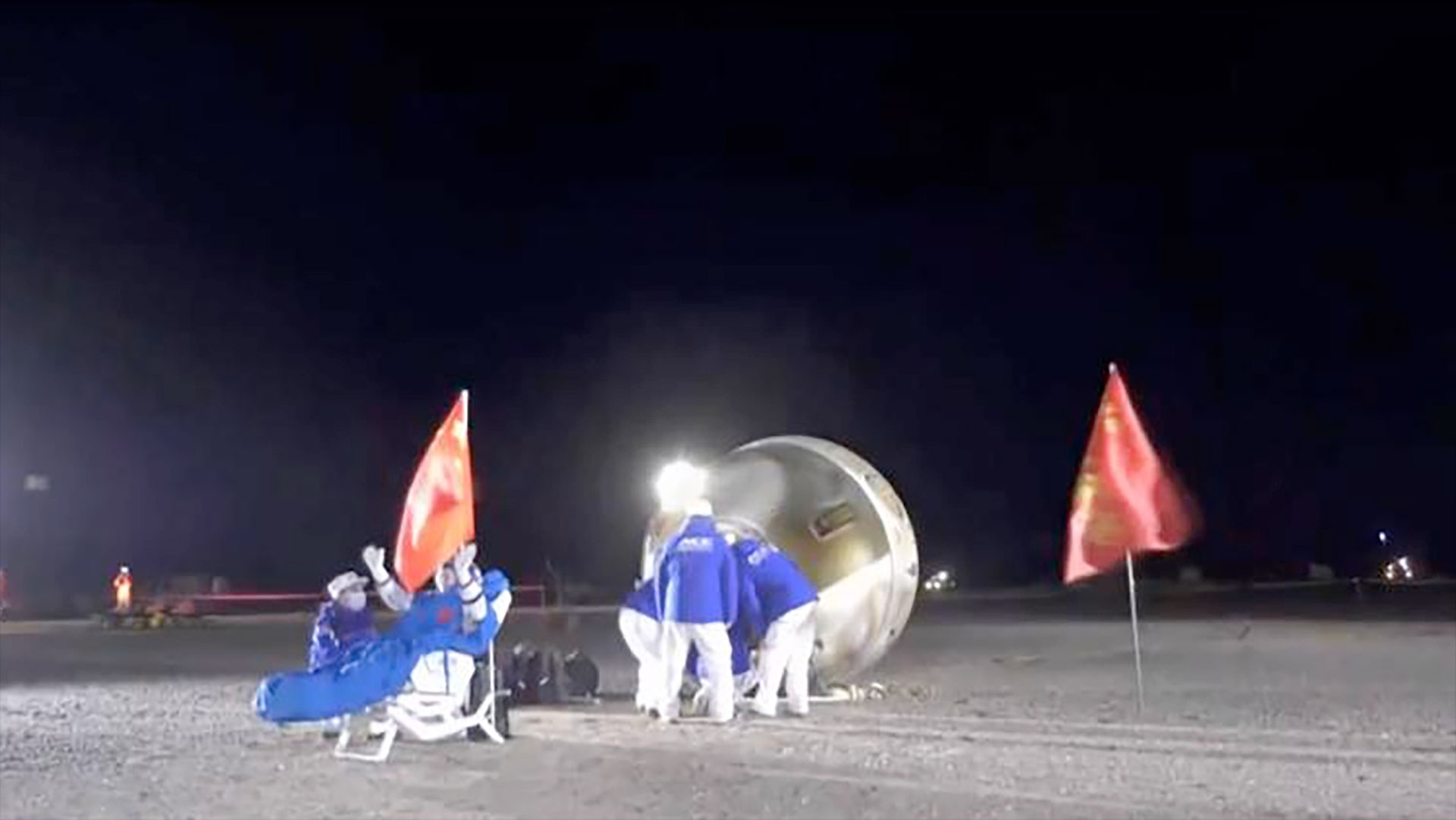China's Shenzhou 18 astronauts return to Earth after 6 months in space (video)
They've been up there since April 25.
China's Shenzhou 18 crew have returned home after more than six months in space.
Astronauts Ye Guangfu, Li Cong and Li Guangsu lived on board China's Tiangong space station since April 25 this year. They concluded their mission on Sunday (Nov. 3), touching down at the Dongfeng landing site in north China.
The landing occurred at about 12:24 p.m. EST (1724 GMT or 12:24 a.m. on Nov. 4 Beijing time). The three astronauts were all reported to be in good health, according to the China Manned Space Agency.
Related: China launches 3 astronauts to Tiangong space station on Shenzhou 19 mission (video)

It was the second time that astronauts landed at Dongfeng during the nighttime. Observation and search and rescue teams used infrared thermal imagers to track the capsule.
Prior to leaving the space station, commander Ye and his crewmates carried out a range of science experiments during their time aboard Tiangong, including studying ancient microbes. They performed a national record spacewalk outside the space station in May, and embarked on another in June to install protective shielding against space debris. Ye also recently became China's first astronaut to surpass 365 days in space in total, having previously been a member of the Shenzhou 13 mission in 2021-2022.
The trio also conducted emergency drills and captured video of the Jiuquan Satellite Launch Center in the Gobi Desert—from which they launched in April—and the Wenchang spaceport, on the island of Hainan, from which Tiangong's modules were launched.
Get the Space.com Newsletter
Breaking space news, the latest updates on rocket launches, skywatching events and more!
The trio greeted the incoming Shenzhou 19 crew aboard Tiangong on Oct. 30, meaning China briefly had six astronauts in space. Commander Ye officially handed over the control of the orbital outpost to Shenzhou 19 commander Cai Xuzhe on Nov. 1. The official ceremony marked China's fifth such orbital changeover since completing the three-module space station in late 2022.
China intends to keep Tiangong, which is roughly 20% as massive as the International Space Station, permanently occupied and operational for at least a decade. Officials recently unveiled plans to expand the space station into a double T-shape by adding three new modules. It will also send a Hubble-class space telescope into the same orbit, allowing it to dock to Tiangong for maintenance and repairs.
Join our Space Forums to keep talking space on the latest missions, night sky and more! And if you have a news tip, correction or comment, let us know at: community@space.com.

Andrew is a freelance space journalist with a focus on reporting on China's rapidly growing space sector. He began writing for Space.com in 2019 and writes for SpaceNews, IEEE Spectrum, National Geographic, Sky & Telescope, New Scientist and others. Andrew first caught the space bug when, as a youngster, he saw Voyager images of other worlds in our solar system for the first time. Away from space, Andrew enjoys trail running in the forests of Finland. You can follow him on Twitter @AJ_FI.









